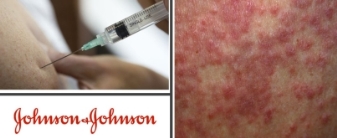Johnson & Johnson's Controversial Prison Experiments Revealed
Unsealed documents from more than 50 years ago, reveal that Johnson & Johnson funded experiments on prison inmates to examine the effects of talc. Bloomberg News reports that J&J’s involvement in these controversial talc studies was not made public until last week.
The unsealed court documents were uncovered in two separate trials last year alleging that J&J’s asbestos-contaminated, talcum powder caused mesothelioma in the plaintiffs. By exposing J&J’s unscrupulous history, testimony about the documents concluded with jurors awarding one plaintiff with punitive damages due to J&J’s conduct.
The “baby powder” experiments were conducted by the notorious UPenn dermatologist, Albert Kligman, at the Holmesburg Prison outside of Philadelphia and were sponsored by J&J. A study from 1971, shockingly, injected inmates with tremolite and chrysotile asbestos along with a shot of talcum powder in their lower backs to compare the dermatological reactions. According to plaintiff attorney, John Satterly, the baby powder experiments “show J&J was worried about asbestos in its talc decades ago. Why else would they pay Kligman to inject asbestos into prisoners? They didn’t just pick asbestos out of thin air.”
Testing on vulnerable populations, which includes the currently incarcerated, is widely regarded as unethical. Even worse, the subjects chosen were majority Black adding to J&J’s fraught legacy of targeting Black communities with their marketing of talcum powder products.
J&J has aggressively defended itself from talc litigation since 2013 and is now evading responsibility altogether, all while continuing to claim that their talc products are safe and never contained asbestos in the first place.



